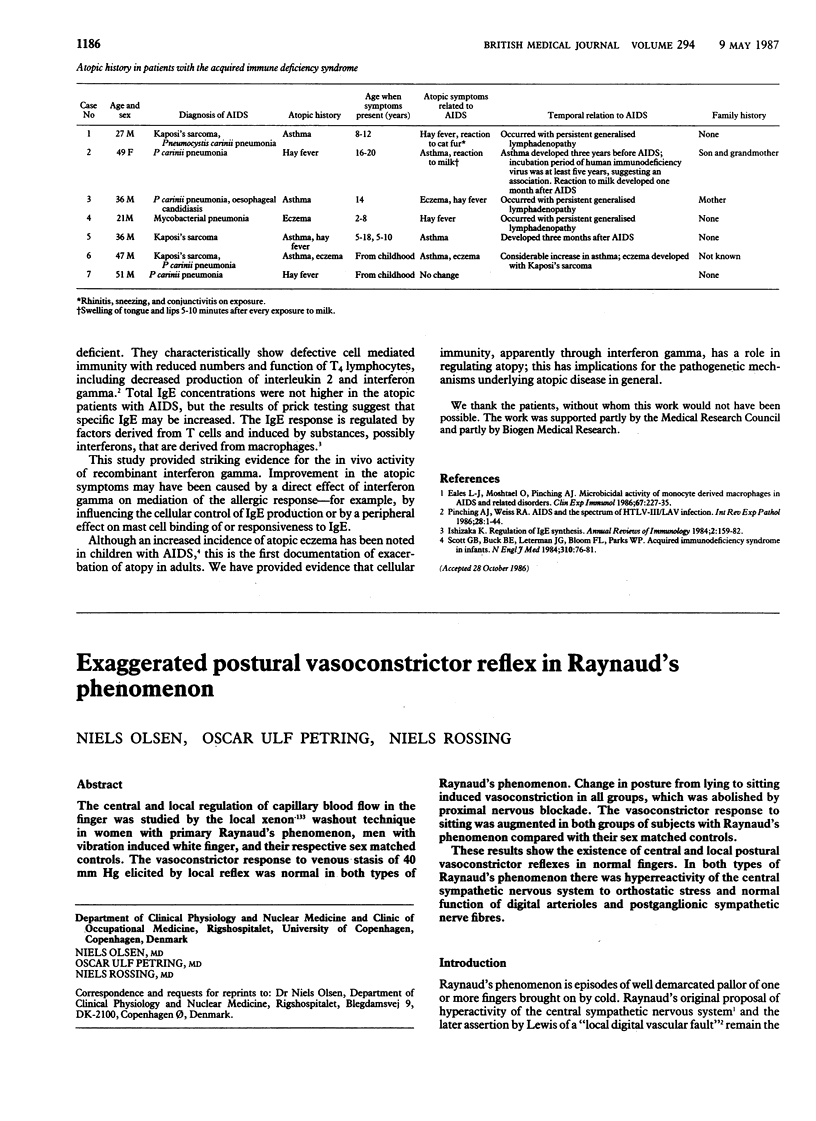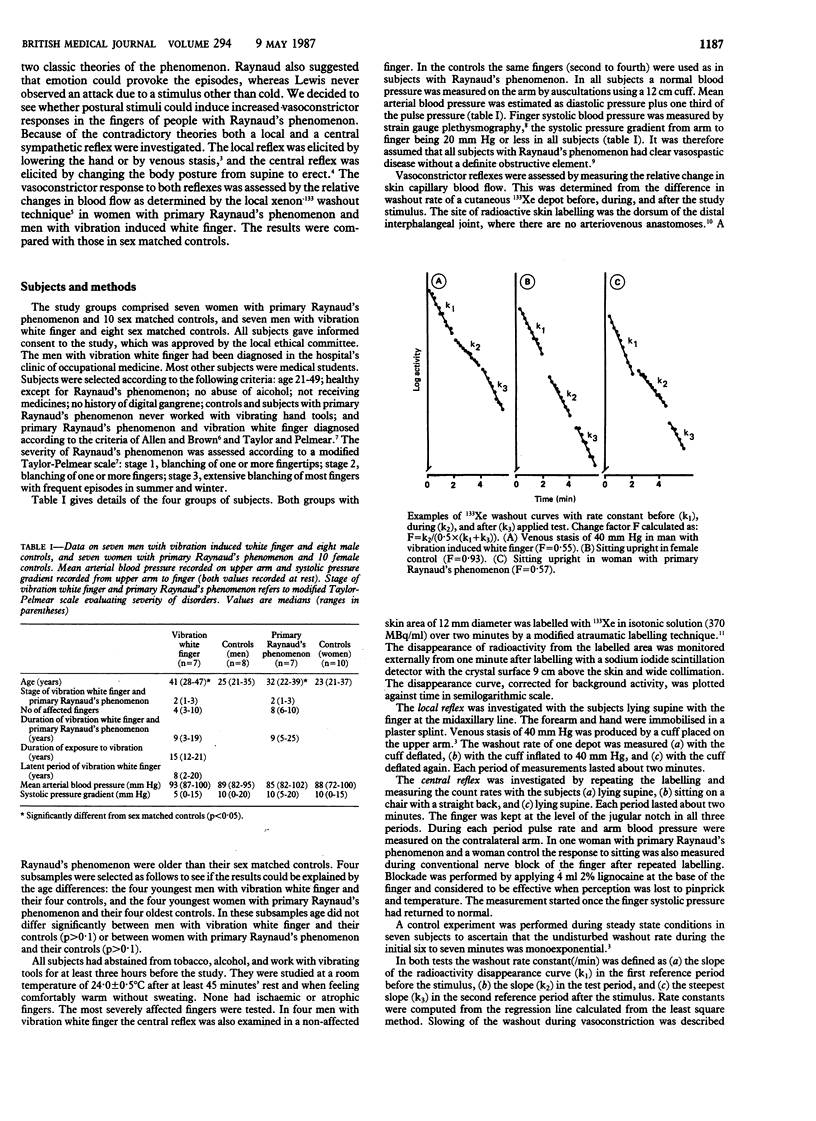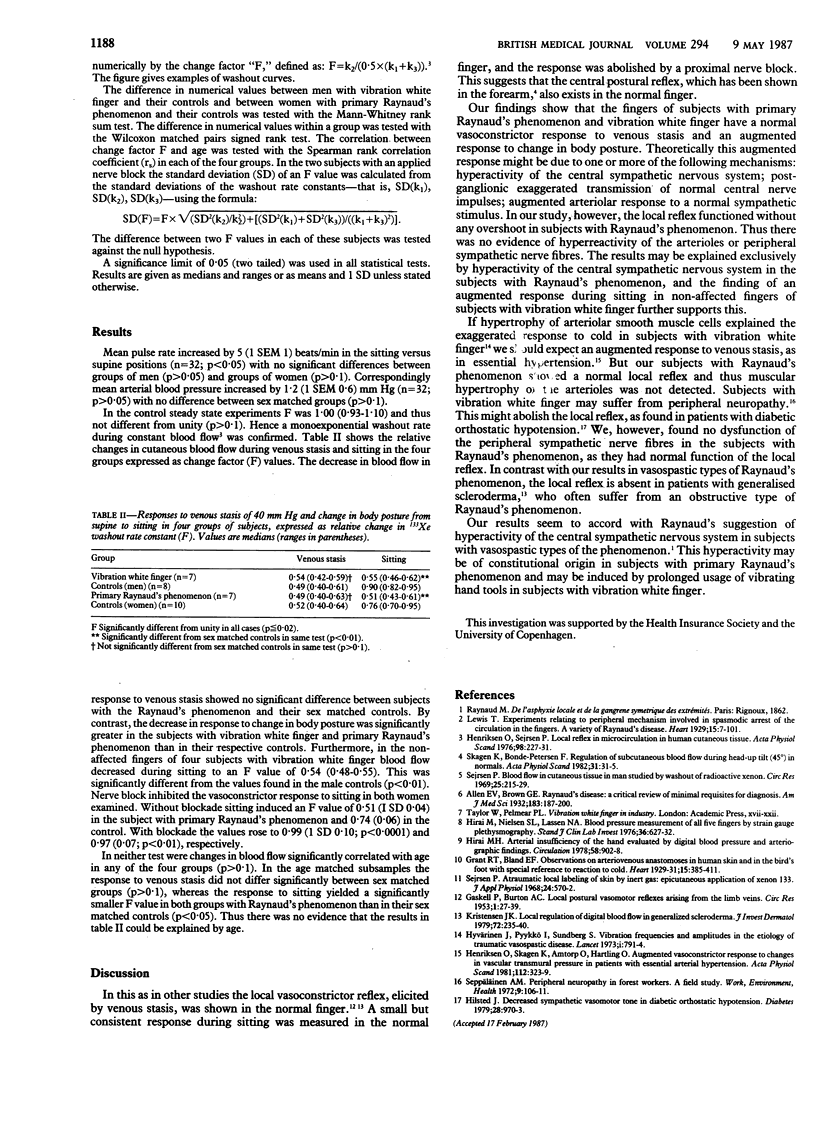Abstract
The central and local regulation of capillary blood flow in the finger was studied by the local xenon-133 washout technique in women with primary Raynaud's phenomenon, men with vibration induced white finger, and their respective sex matched controls. The vasoconstrictor response to venous stasis of 40 mm Hg elicited by local reflex was normal in both types of Raynaud's phenomenon. Change in posture from lying to sitting induced vasoconstriction in all groups, which was abolished by proximal nervous blockade. The vasoconstrictor response to sitting was augmented in both groups of subjects with Raynaud's phenomenon compared with their sex matched controls. These results show the existence of central and local postural vasoconstrictor reflexes in normal fingers. In both types of Raynaud's phenomenon there was hyperreactivity of the central sympathetic nervous system to orthostatic stress and normal function of digital arterioles and postganglionic sympathetic nerve fibres.
Full text
PDF


Selected References
These references are in PubMed. This may not be the complete list of references from this article.
- GASKELL P., BURTON A. C. Local postural vasomotor reflexes arising from the limb veins. Circ Res. 1953 Jan;1(1):27–39. doi: 10.1161/01.res.1.1.27. [DOI] [PubMed] [Google Scholar]
- Henriksen L., Sejrsen P. Local reflex in microcirculation in human cutaneous tissue. Acta Physiol Scand. 1976 Oct;98(2):227–231. doi: 10.1111/j.1748-1716.1976.tb10299.x. [DOI] [PubMed] [Google Scholar]
- Henriksen O., Skagen K., Amtorp O., Hartling O. Augmented vasoconstrictor response to changes in vascular transmural pressure in patients with essential arterial hypertension. Acta Physiol Scand. 1981 Jul;112(3):323–329. doi: 10.1111/j.1748-1716.1981.tb06823.x. [DOI] [PubMed] [Google Scholar]
- Hilsted J. Decreased sympathetic vasomotor tone in diabetic orthostatic hypotension. Diabetes. 1979 Nov;28(11):970–973. doi: 10.2337/diab.28.11.970. [DOI] [PubMed] [Google Scholar]
- Hirai M. Arterial insufficiency of the hand evaluated by digital blood pressure and arteriographic findings. Circulation. 1978 Nov;58(5):902–908. doi: 10.1161/01.cir.58.5.902. [DOI] [PubMed] [Google Scholar]
- Hyvärinen J., Pyykkö I., Sundberg S. Vibration frequencies and amplitudes in the aetiology of traumatic vasospastic disease. Lancet. 1973 Apr 14;1(7807):791–794. doi: 10.1016/s0140-6736(73)90598-9. [DOI] [PubMed] [Google Scholar]
- Kristensen J. K. Local regulation of digital blood flow in generalized scleroderma. J Invest Dermatol. 1979 May;72(5):235–240. doi: 10.1111/1523-1747.ep12531698. [DOI] [PubMed] [Google Scholar]
- Sejrsen P. Blood flow in cutaneous tissue in man studied by washout of radioactive xenon. Circ Res. 1969 Aug;25(2):215–229. doi: 10.1161/01.res.25.2.215. [DOI] [PubMed] [Google Scholar]
- Skagen K., Bonde-Petersen F. Regulation of subcutaneous blood flow during head-up tilt (45 degrees) in normals. Acta Physiol Scand. 1982 Jan;114(1):31–35. doi: 10.1111/j.1748-1716.1982.tb06948.x. [DOI] [PubMed] [Google Scholar]


